Home For Spring
“Birdsong and blue sky sum up the early days of lockdown for me when I made a series of drawings, using pastel colours, marks and direction on a circular format to map out birdsong from dawn to dusk”
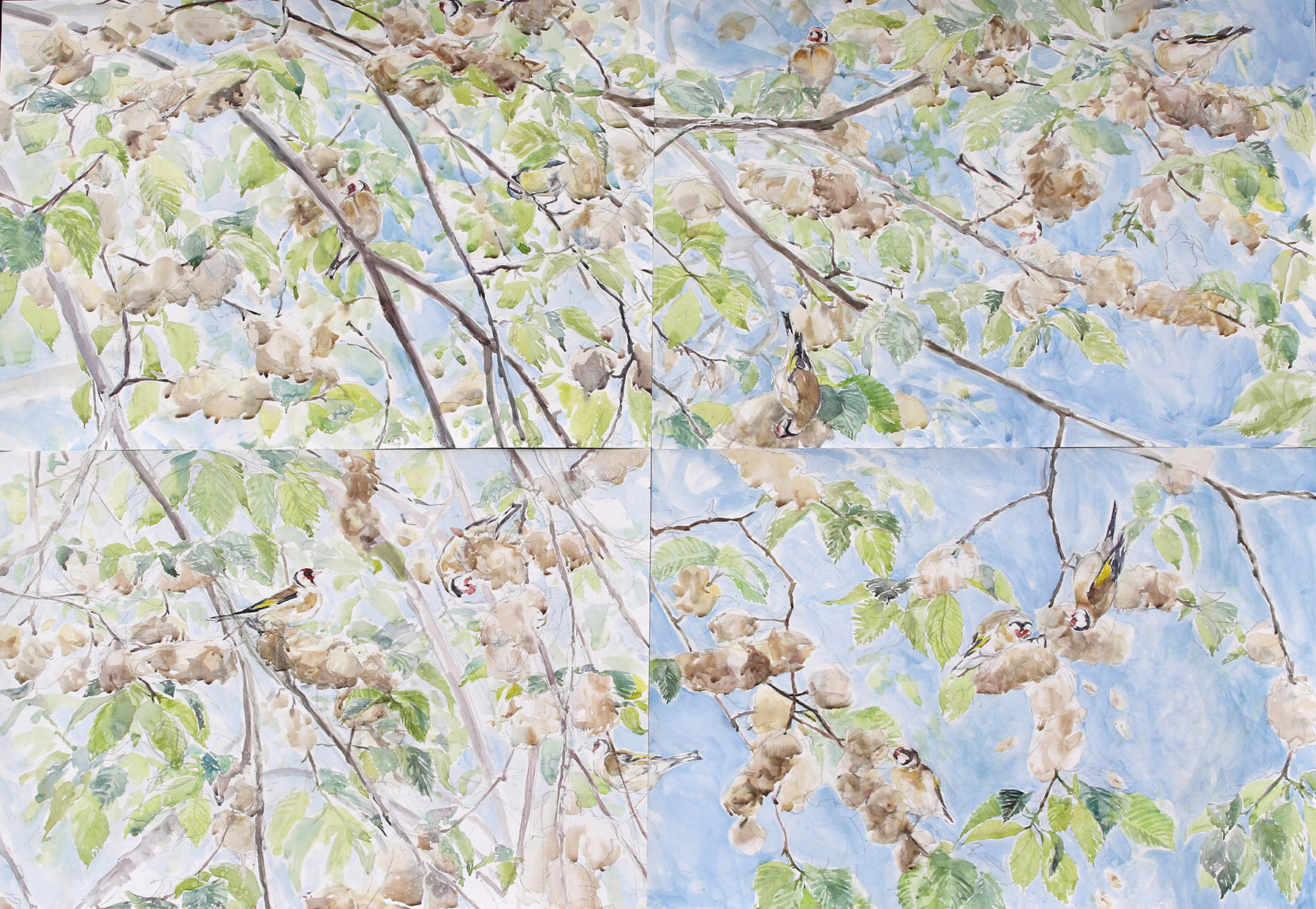
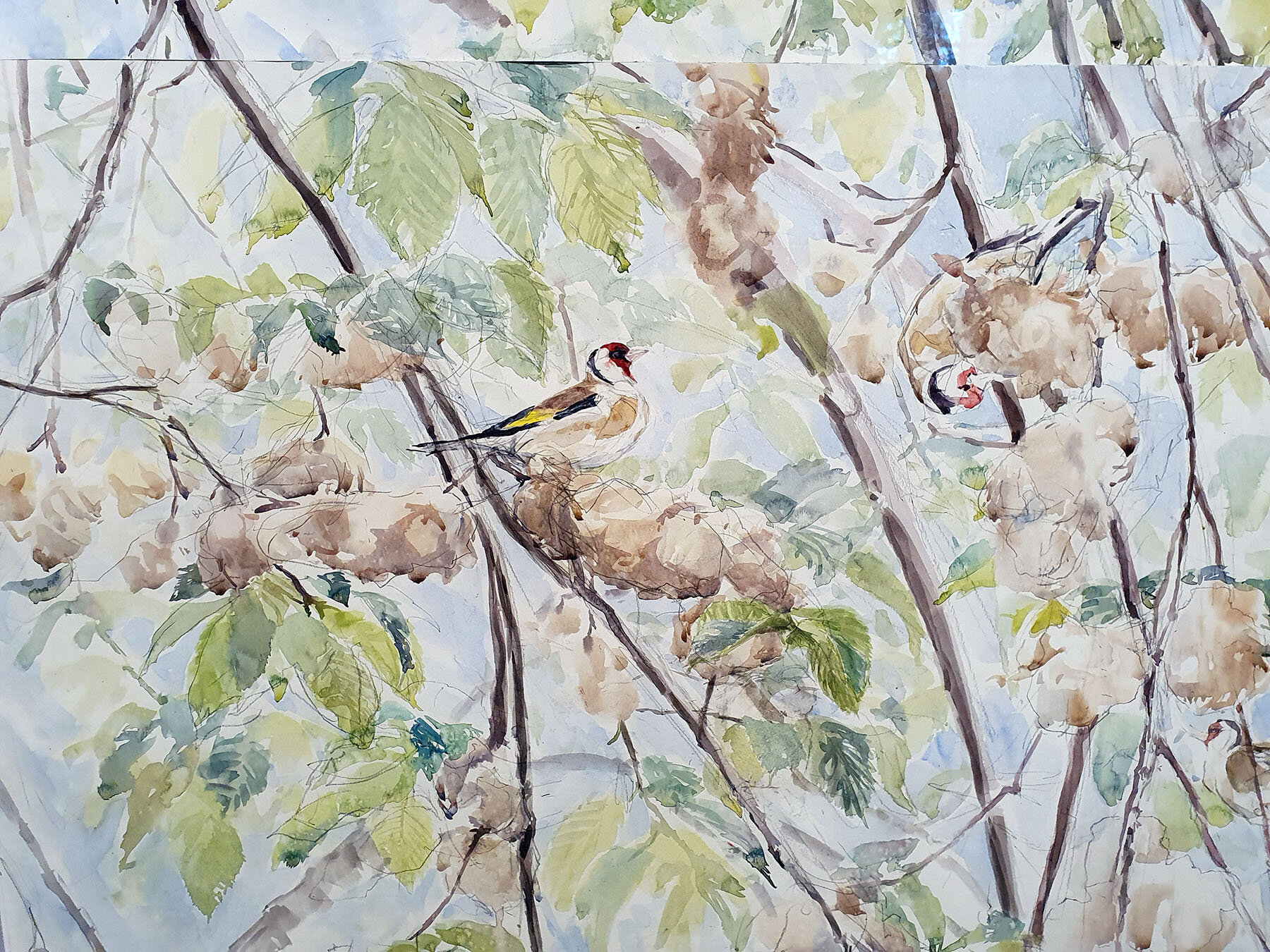


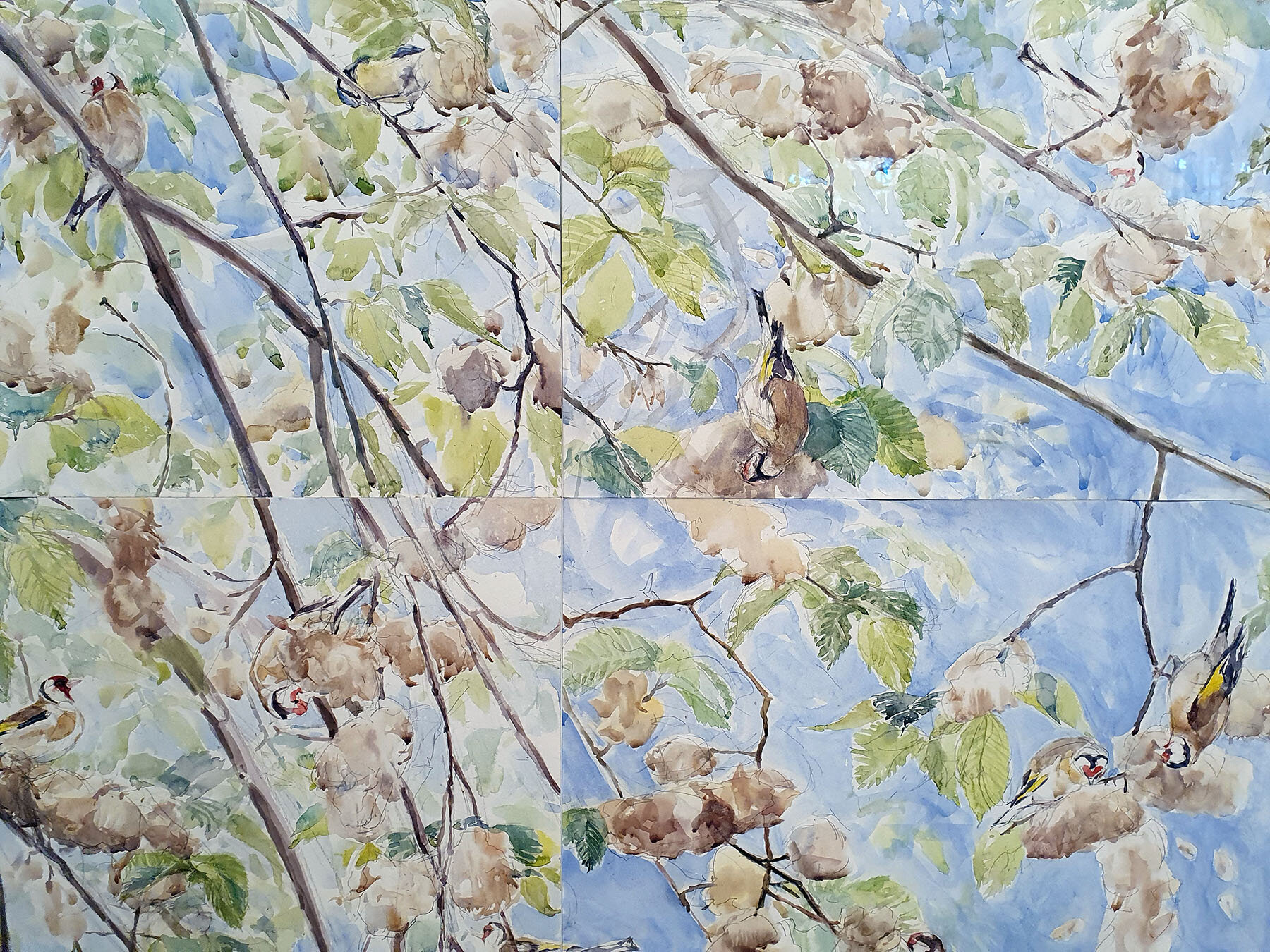
Being isolated, staying put, has led me to search for drawing inspiration in the familiar patch of rural Mid Wales where I’m from and momentarily find myself returned to during this period. I thought I knew this area like the back of my hand, but looking closer I’ve discovered things in the surrounding nature on my doorstep that I’d never noticed before, such as the wych elm tree in this first drawing. I’ve not knowingly seen an elm tree before, but this species is unmistakable when fruiting, unusually between May and July, forming large clumps of translucent winged seeds known as samaras along its branches. As they dry, the seeds turn into papery confetti that disperse in the wind and also attract flocks of feeding finches, such as the goldfinch in this drawing.
Several times this spring, I’ve been interrupted by owls. Tawny owls often hoot in the day, but you can never find them this way; the best approach is to listen out for mobs of smaller birds alerting others to the location of an owl high in the tree tops. I don’t know when the daytime birds will chance upon a roosting owl and begin to angrily advertise its whereabouts, but on a few occasions this spring I’ve dropped everything to follow them and find an owl to paint.
Birdsong and blue sky sum up the early days of lockdown for me when I made a series of drawings, using pastel colours, marks and direction on a circular format to map out birdsong from dawn to dusk. The image here shows drawings made from 05.30 – 21.00, 24th April.
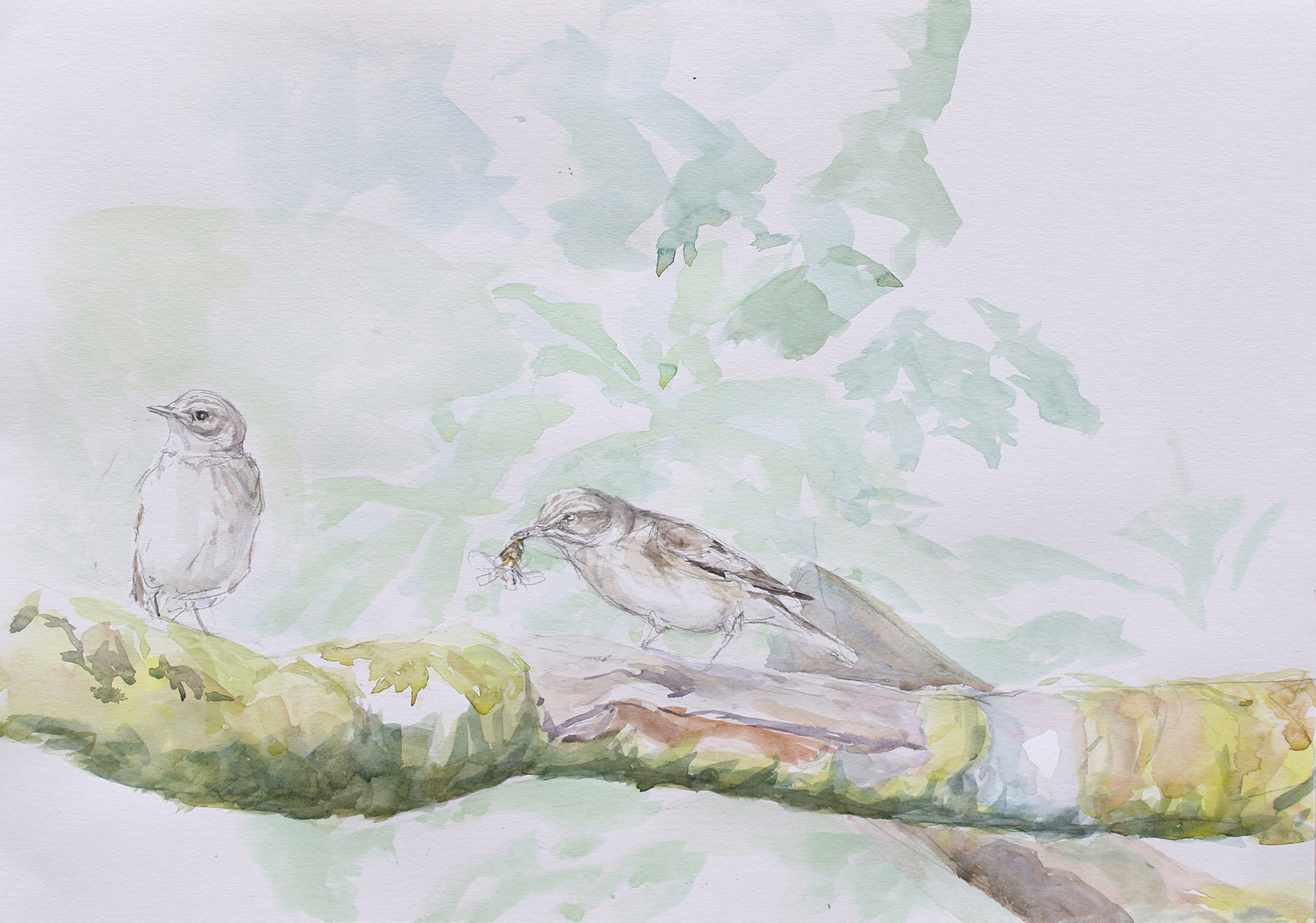
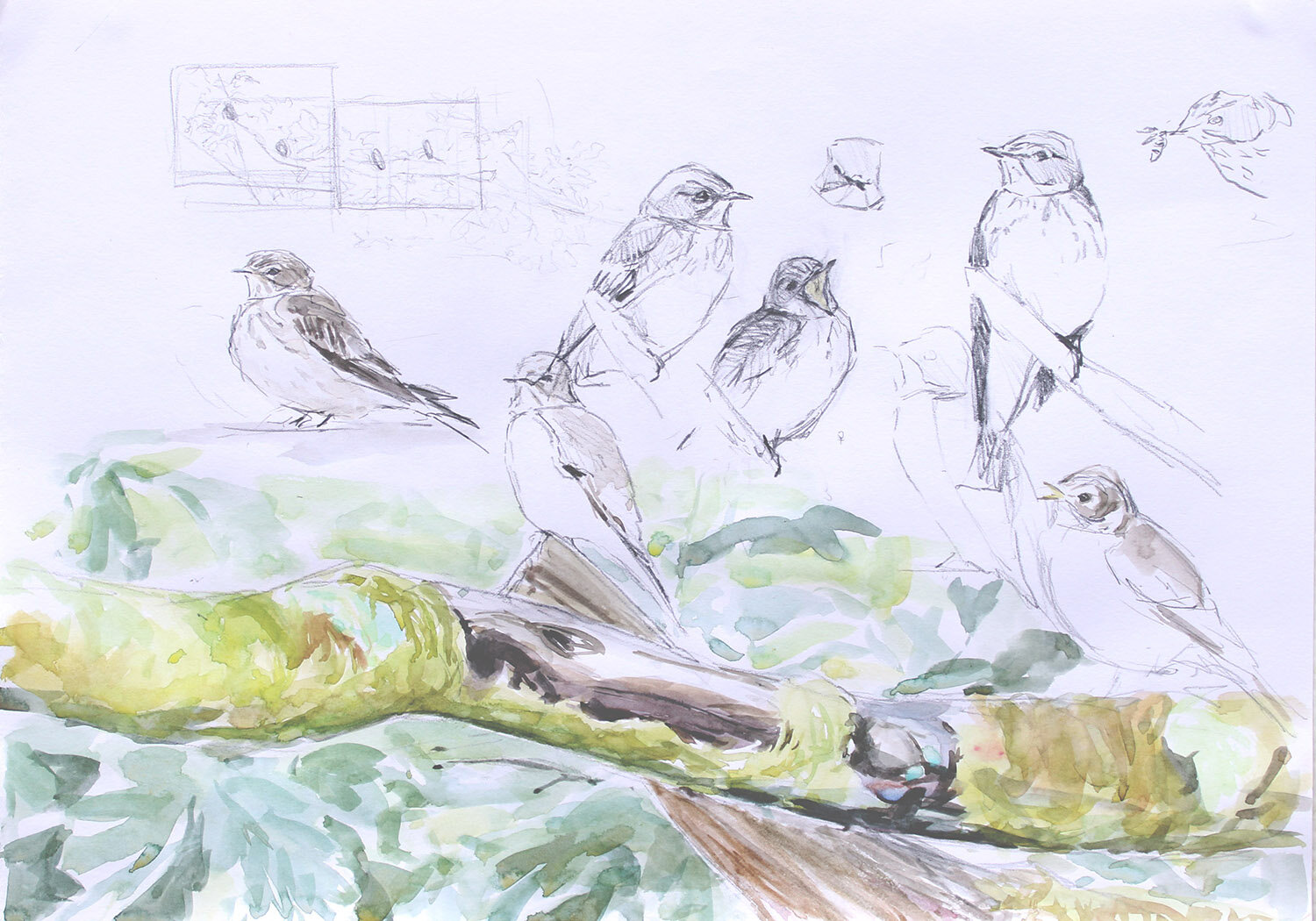
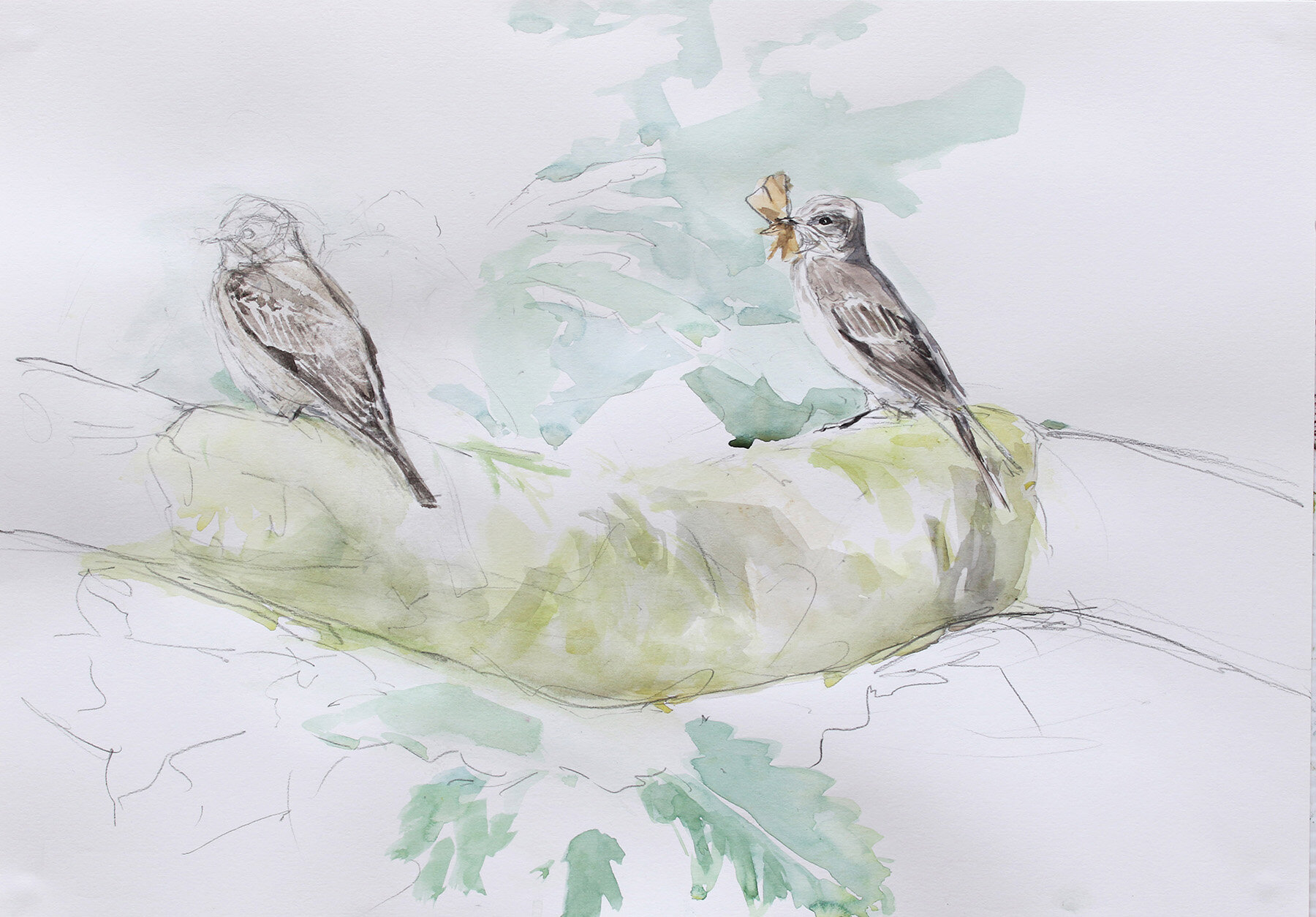
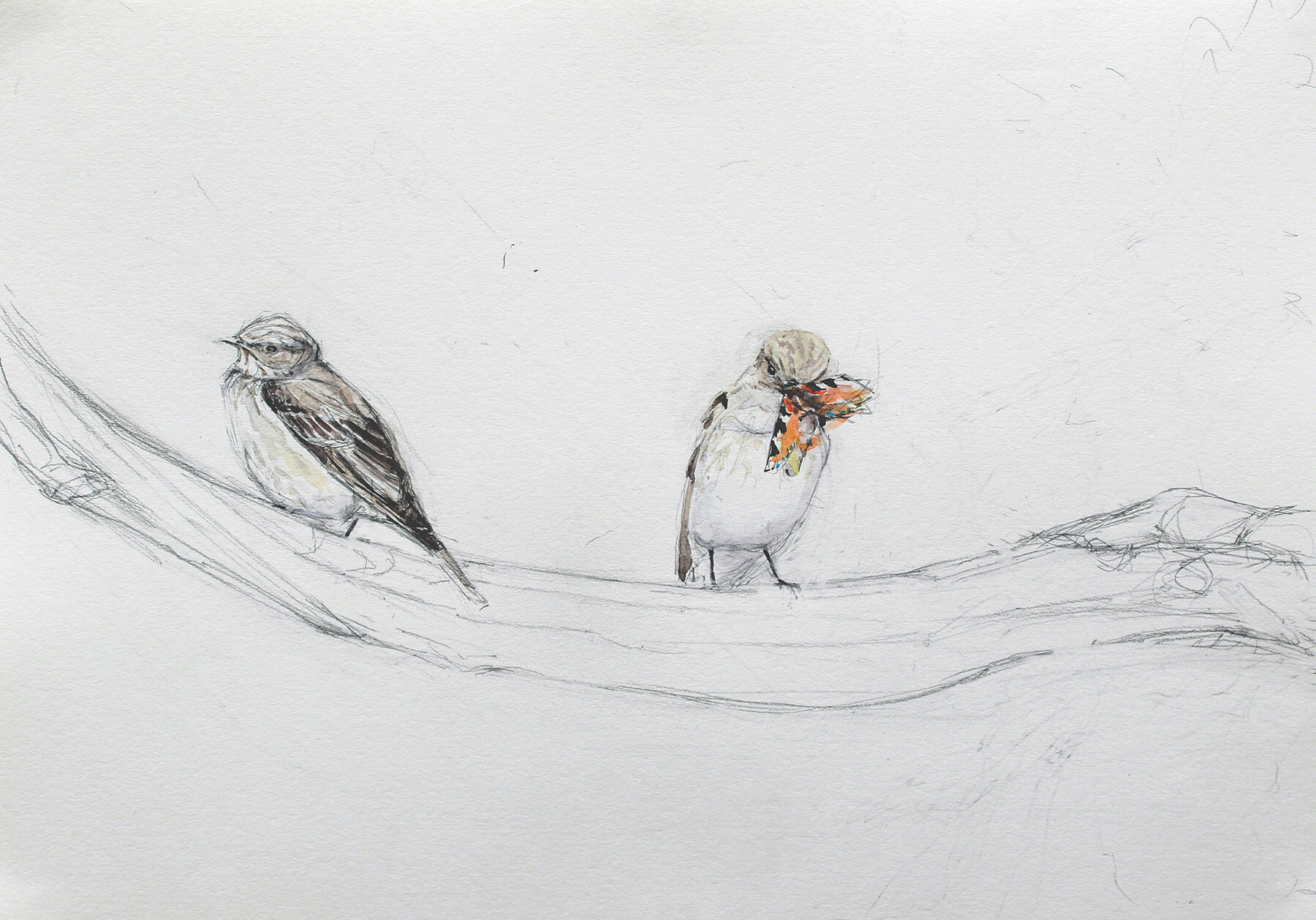
Today, three months on from my unplanned return to Mid Wales, the dawn chorus has been stripped of all its force as one by one resident and summer migrant birds complete their breeding cycle and fall silent. Spring is not quite over however for the species of birds I am currently drawing, the spotted flycatcher. Spotted flycatchers are migrants from Sub Sahara Africa, they arrive in early June and are among the last to breed. They like to nest against the sides of buildings and this year a pair has chosen to do so outside my window, also using a nearby branch to hunt passing insects from. What they lack in flashy plumage they make up for in character and incredible skill in hunting on the wing, catching anything from tiny midge up to big prey like the hornet and small tortoiseshell butterfly shown in these drawings. Spotted flycatchers often have two broods each year, the first for this pair will fledge around the time this newsletter goes out. If they have a second brood then the first brood will actually help raise the new chicks by bringing food to the nest, giving me a little more time and new subjects to draw.



